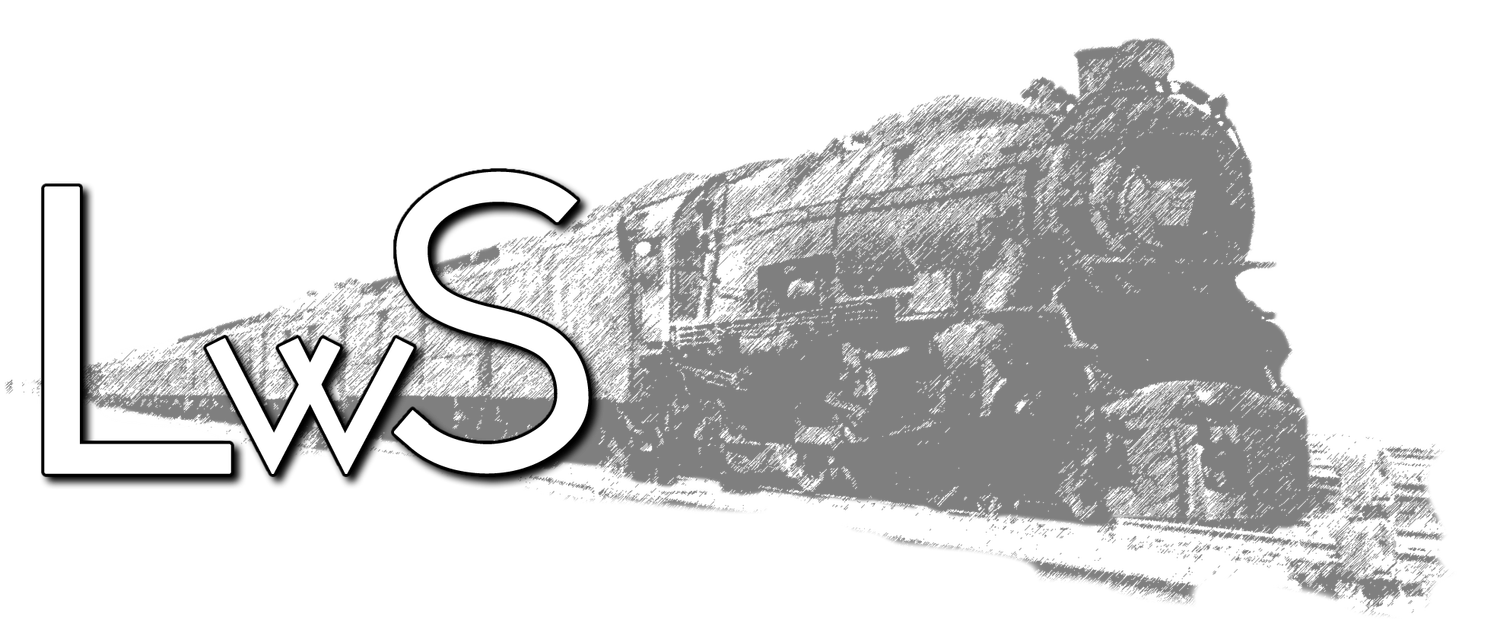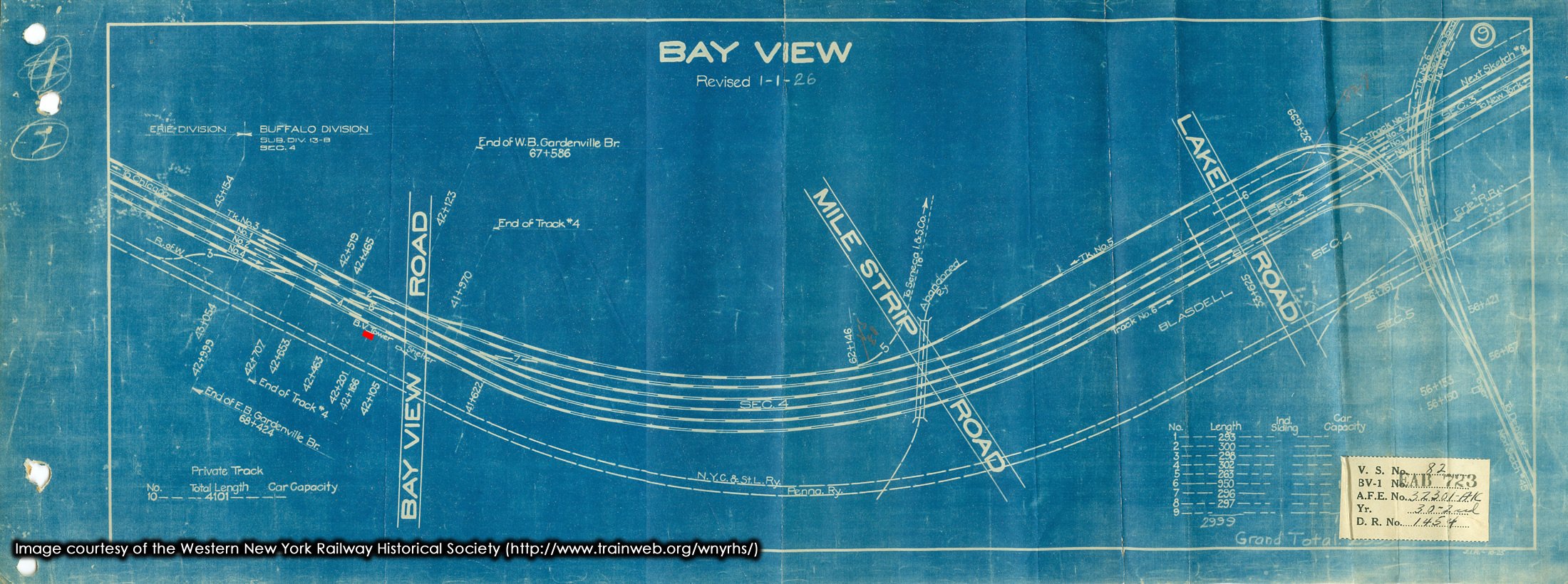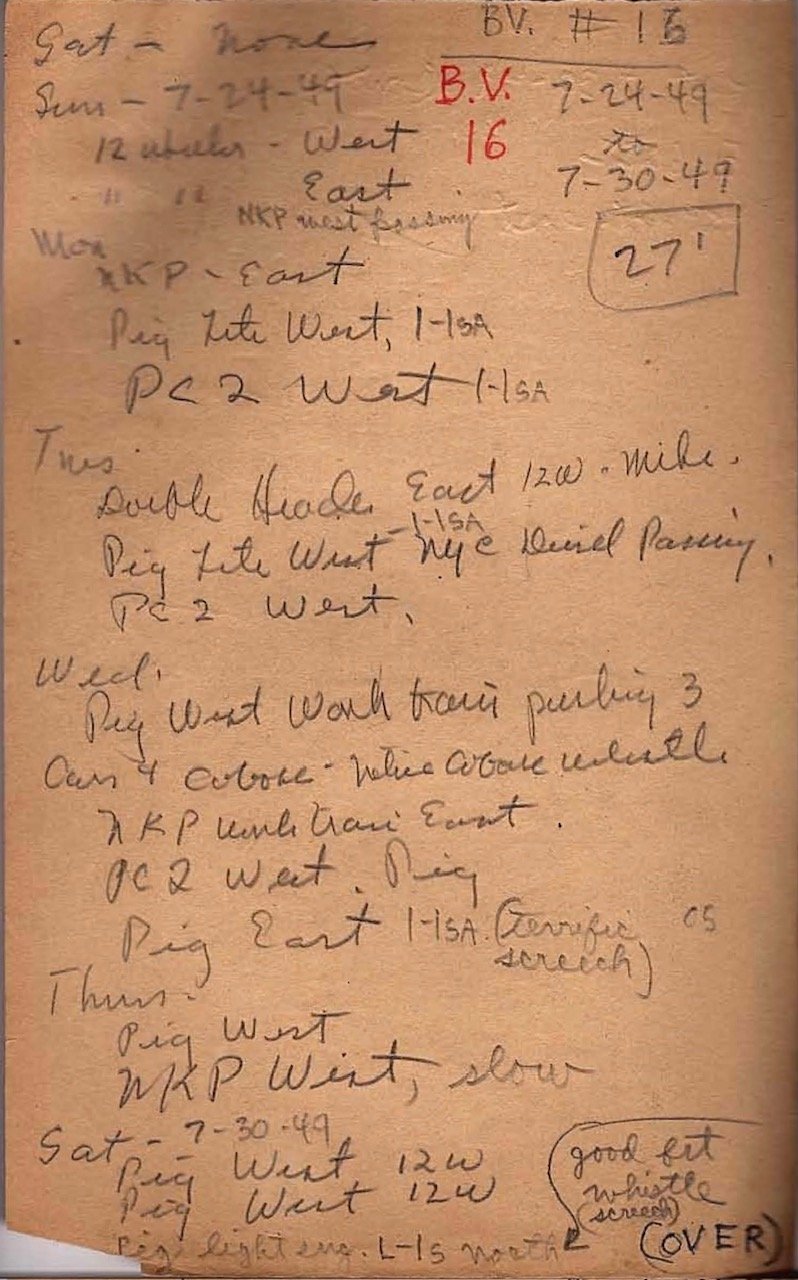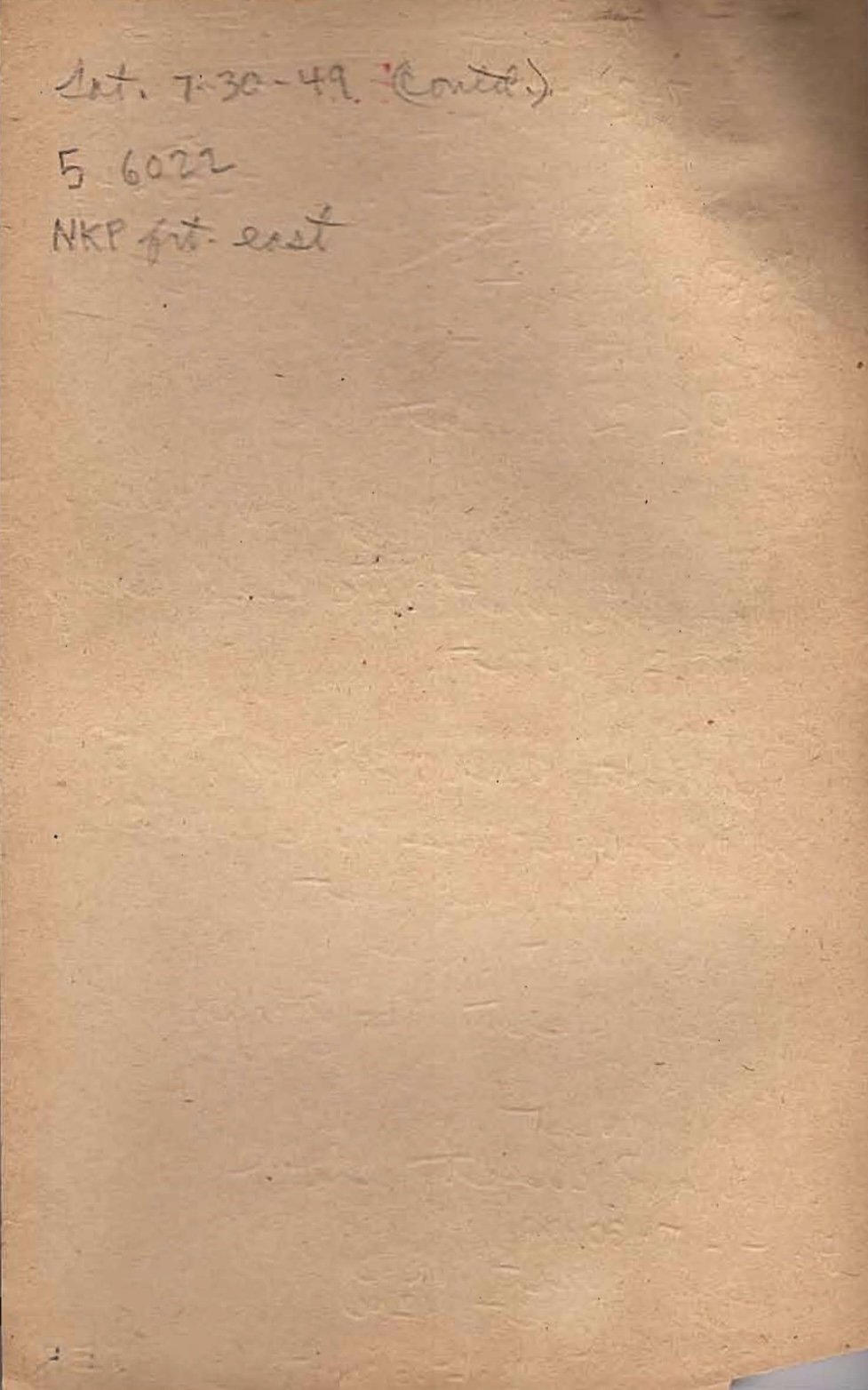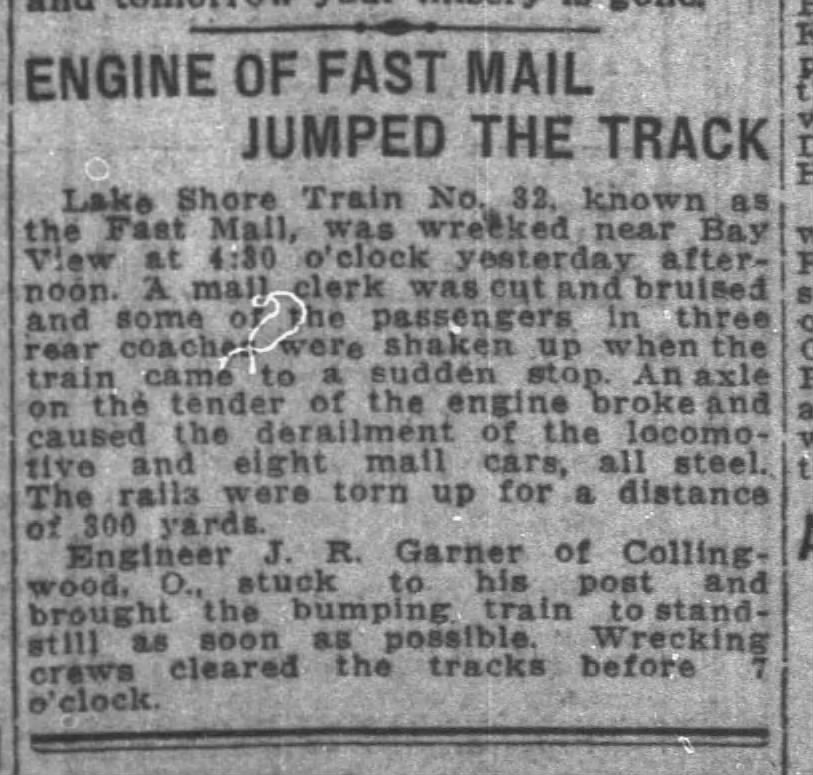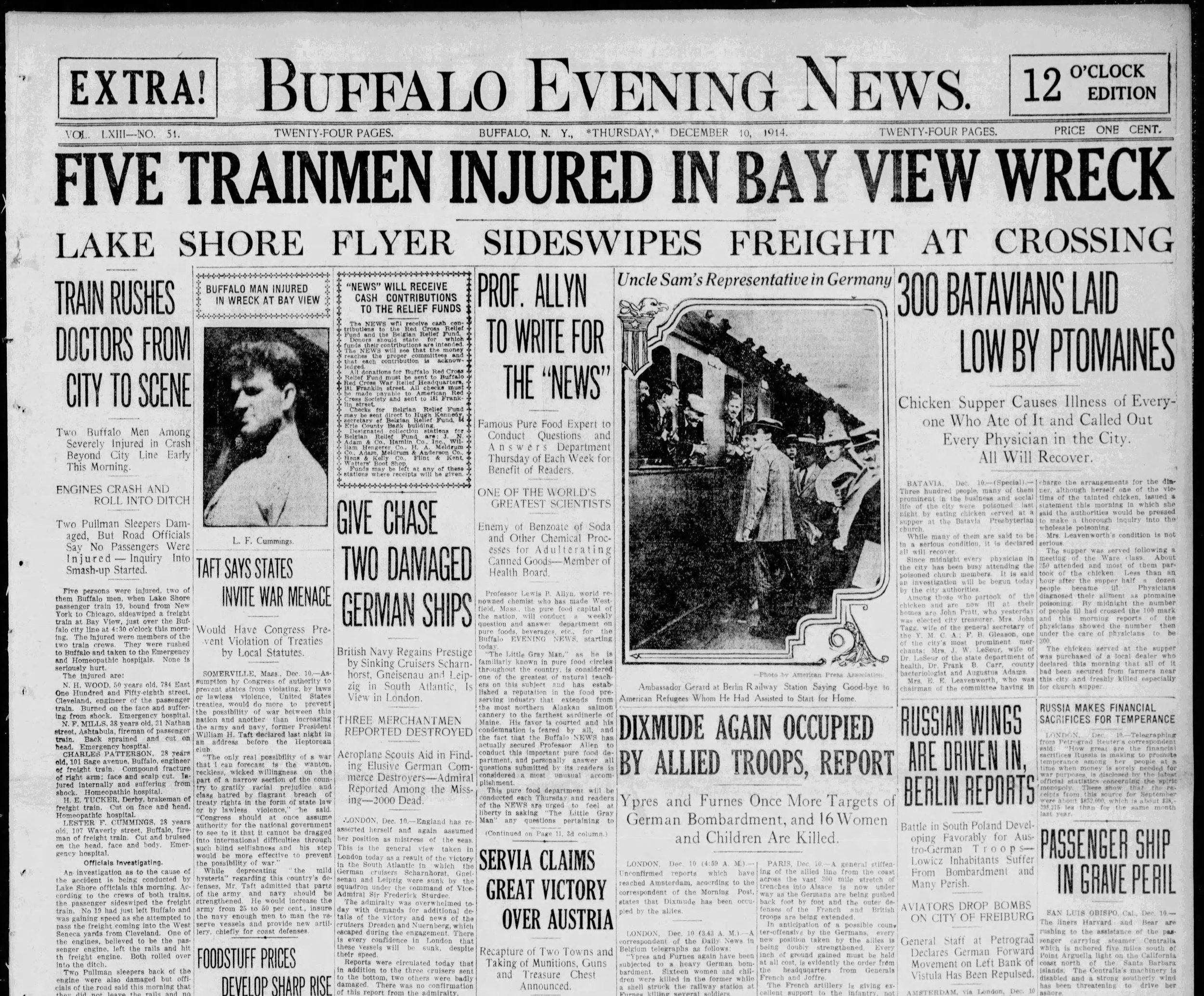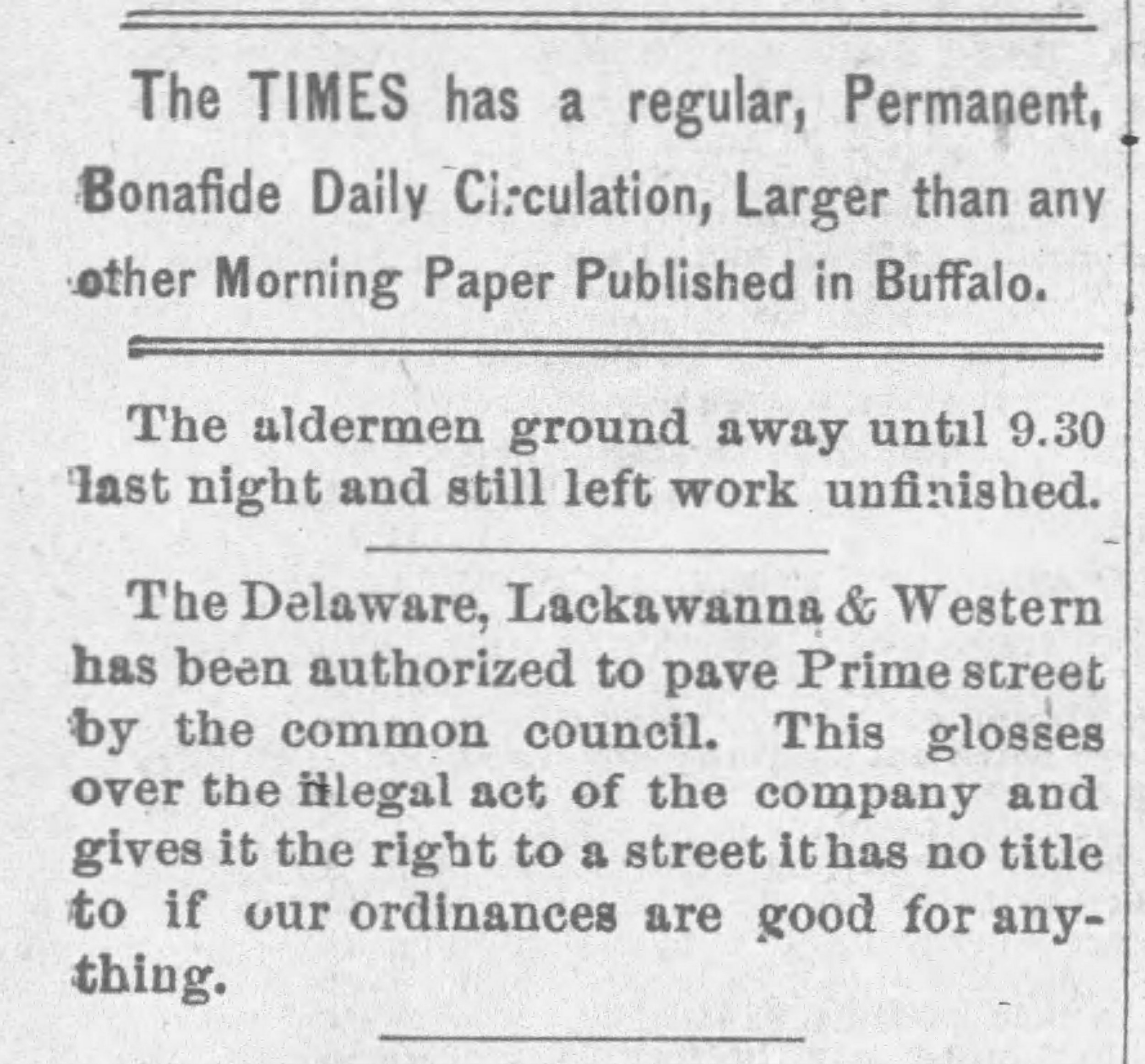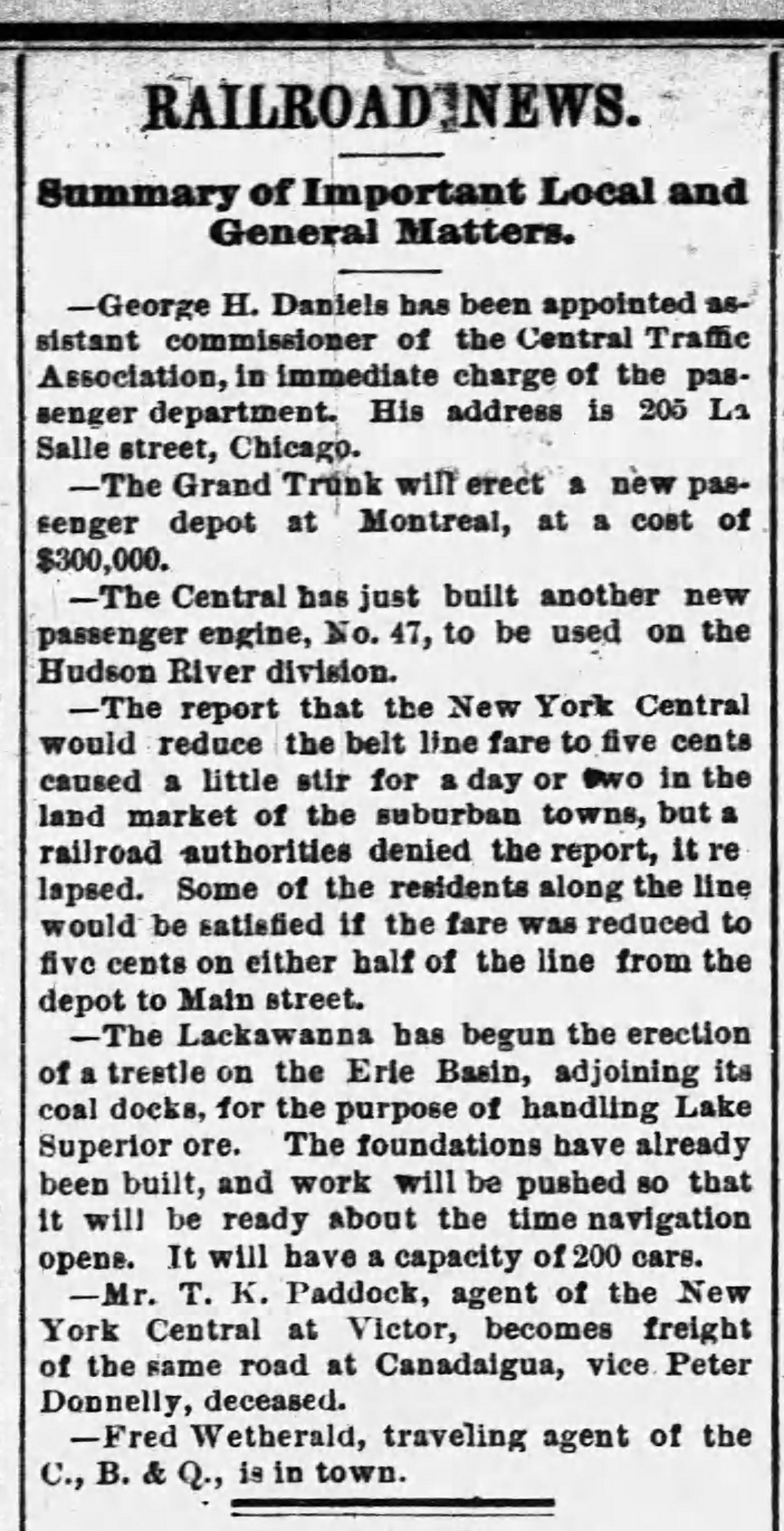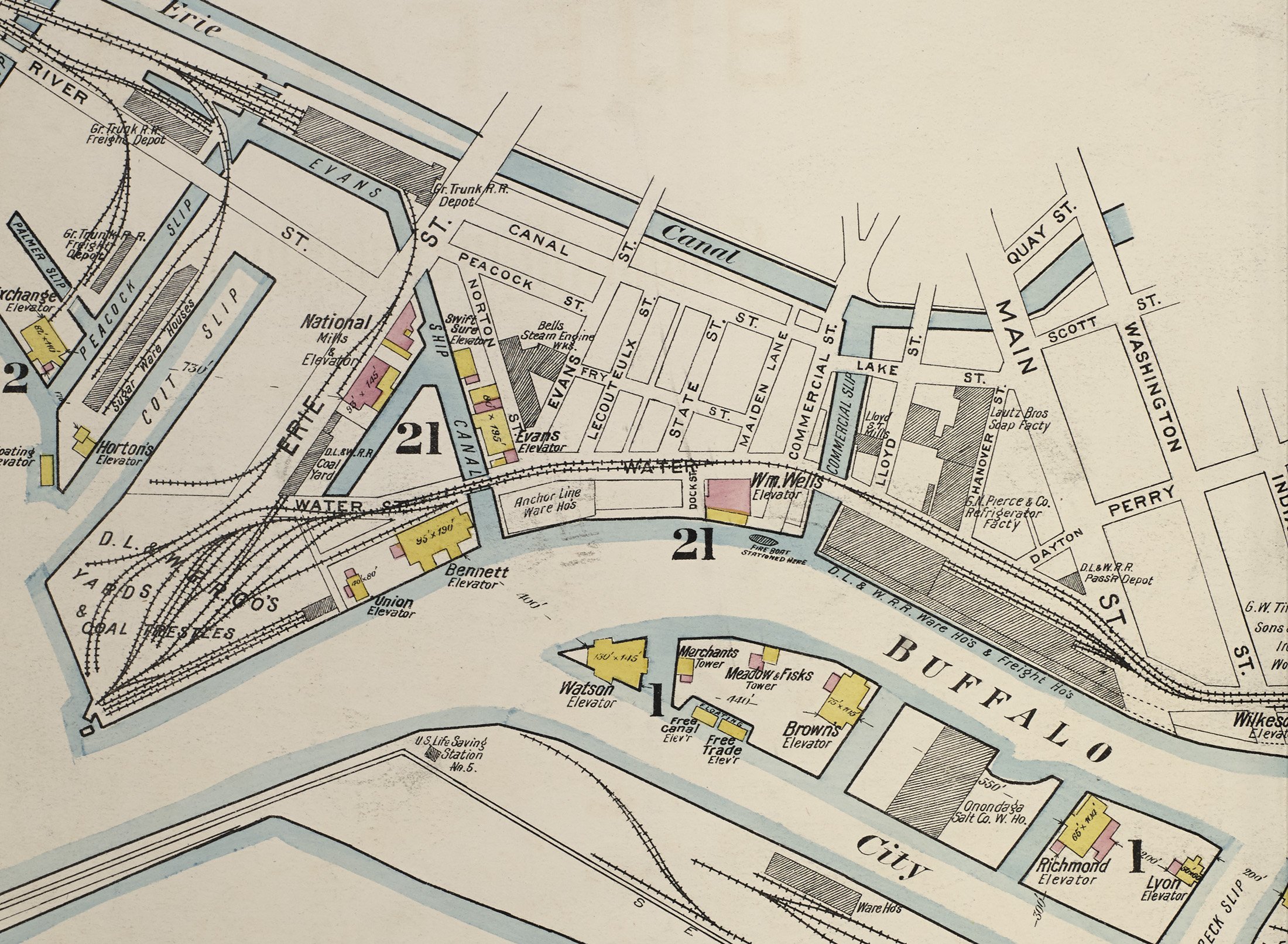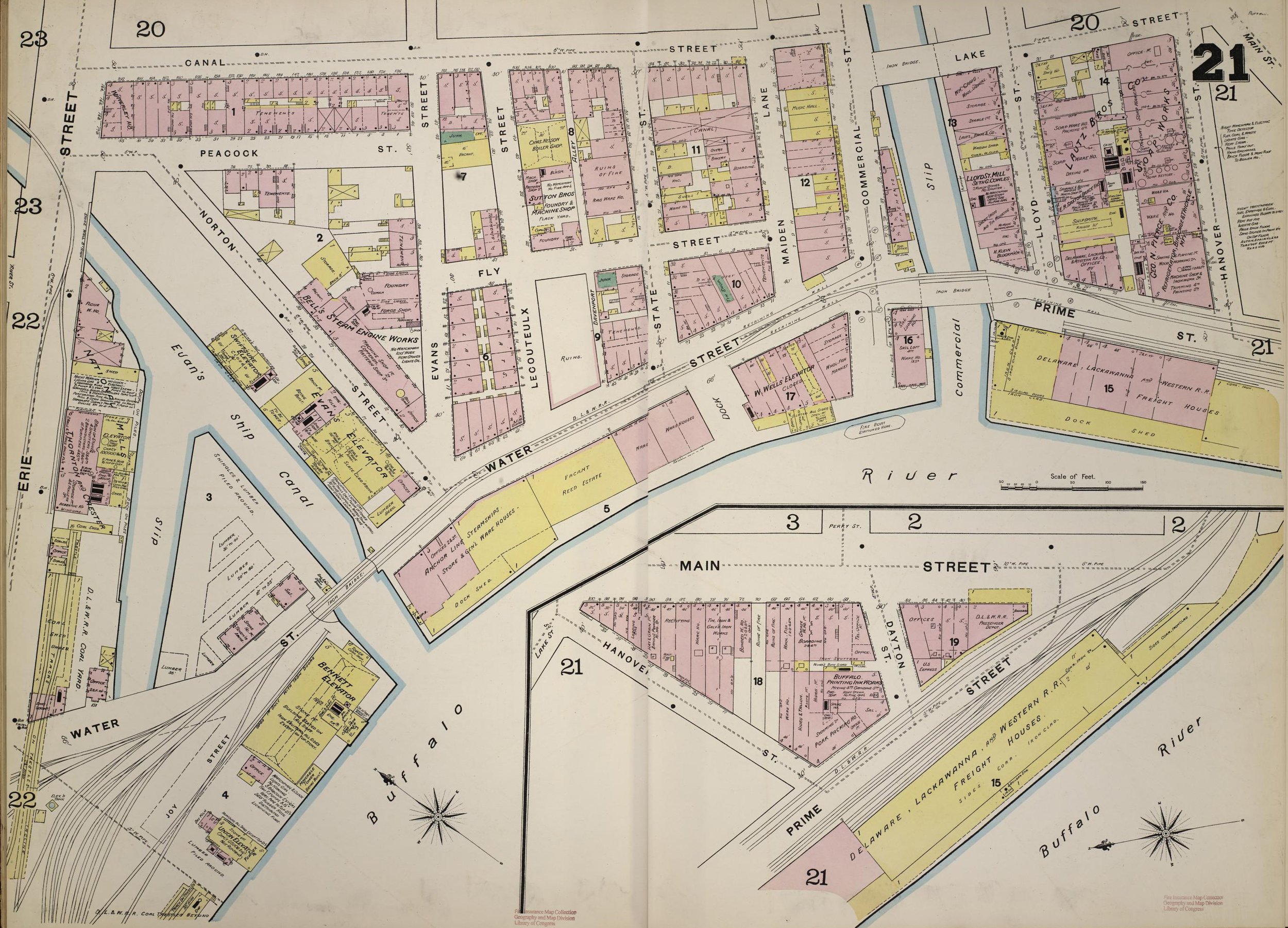LwS S3, E1: “Railroad News” & A Week at BV Tower
Welcome to the first episode in season 3 of Living with Steam. When I began this journey with John’s sound recordings way back in the early 1990s, I had no idea how much I would continue to learn about and appreciate the work he did to preserve railroad history; especially that of the Pennsylvania Railroad. Every time I carefully look over John’s notes, what originally seemed like simple gibberish 30 years ago, now takes on a completely different historical context the more time I spend with “John, the Man” and not simply “John, the Over-the-Top Railfan.” Producing new episodes of LwS always introduces me to aspects of John’s life that I knew nothing about. Some bits are found buried in the “noise” of an audio recording.
Case in point are the recordings heard in this first episode of season three of Living with Steam. During the week of July 24, 1949, John, his sister Annette, and a few of his close friends, visited New York Central’s Bay View (BV) interlocking tower in Blasdell, NY. I can only assume that the gang visited the tower in the evening hours due to John’s 9-5 work schedule at Buffalo Central Terminal. Based on what was recorded during the week, John only capture two to three trains per evening. His best friend, Sam Herrington, was the tower operator… so that would certainly explain the somewhat “party atmosphere” going on since Sam was also acquainted with most of John’s friends. It may not be completely noticeable in these recordings, but many more of John’s BV recordings will show just how lighthearted the mood was as the gang sat around the tower enjoying the exhilarating presence of trains pulled by steam engines as they roared past BV tower almost every minute.
The photo to the right was probably taken by Annette. John is standing at the interlocking switches and levers on the second floor of BV tower. Obviously, John was not performing any of the actual tower duties Sam was responsible for. But how incredibly lucky was John to be able to show up at BV whenever he wanted just to hang out with his best friend? Most guys hung out in their garage, in the basement of their homes, or at a local watering hole. These guys hung out at a very active interlocking tower that controlled one of the busiest sections of the New York Central mainline.
The photo below was likewise taken on the second floor of BV tower; more than likely by Sam Herrington. Unfortunately, I haven’t been able to identify the gal on the left…. but on her left side is John’s sister Annette. Next to her is Bill Kessel, the gent who took the “notes” that more or less identified the trains John recorded during the week. To be perfectly honest, these pictures could have been taken on any one of the nights featured in these recordings.
I want to give my heartfelt thanks to Steve Kocsis at the Western New York Railway Historical Society for providing me with these two incredible prints. Unfortunately, they sustained water damage at some point and were almost completely stuck together. Can they be completely restored? Perhaps, thanks to the miracles of Photoshop. But to be honest, it’s often best to leave photographs alone and not attempt a digital restoration… which could make things much worse. Regardless, these two prints put visuals with the events heard in the recordings John made at BV Tower during this week in July of 1949.
That in itself is pretty incredible.
The image above, courtesy of the Western New York Railway Historical Society, shows the detailed track plan around BV Tower in 1926. The tower itself is indicated by the red rectangle. In the diagram, the Nickel Plate Road tracks are the first set south of the tower. The tracks of the Pennsylvania are immediately south of the NKP tracks. The New York Central’s busy mainline tracks are north of the tower. If you click on the image, you’ll see a larger version of the diagram. You’ll then be able to clearly see how the NYC’s tracks were numbered; 3-1-2-4, then 5 and 6. The high-speed switches are clearly indicated in the diagram as well.
Clicking on the image will open a larger version to see better detail.
Above are the notes Bill Kessel wrote down for the recordings John made from July 24 to the 30th, 1949. If anyone knows what “PC-2” might refer to, I’d greatly appreciate the info.
As efficient as traffic control was at BV Tower, not everything ran according to plan back in the day. The images above, courtesy of the Western New York Railway Historical Society, show the results of the derailment that occurred on the 31st of May in 1915. The train was the Lake Shore Fast Mail. Peaking over the top of the wrecked train is the original tower at Bay View; the one installed by the Lake Shore in 1903. Below are several news articles from Buffalo’s press describing the accident. Click on each image to open in a larger view.
Top left: Buffalo News, June 1, 1915
Top right: Buffalo Commercial, June 1, 1915
Bottom left: Buffalo Courier, June 1, 1915
Bottom right: Buffalo Evening Times, June 1, 1915
Almost every move the railroads in Buffalo made was reported to some extent in all of Buffalo’s newspapers; which, back in the 19th and early 20th centuries, there were several being printed. The example above, from the Buffalo Evening News and Buffalo Commercial of December 10, 1914, reports a serious accident that occurred at Bay View when a passenger train collided with a freight. Interesting of note is how this particular issue of the BEN is likewise reporting on the trouble taking place in Europe at a time when World War 1 was becoming a topic hard to ignore.
“Railway Age” was originally designed as a trade magazine for the readership of those who worked in the railroad industry. First published in 1856 in Chicago (which at that time was the railroad capitol of the world), the magazine intended on keeping tabs on anything and everything going on with railroads all over the United States. It is still published to this day.
You can find a huge collection of back issues of Railway Age at: https://archive.org/details/pub_railway-age?sort=-reviewdate
In this episode of LwS, the unbelievable story of how the Delaware, Lackawanna & Western Railroad seized Prime Street in Buffalo in 1886 is told. As humorous as the event may seem today, back in 1886, the story infuriated so many prominent people in Buffalo that it made all of the regional newspapers; both as a news story and commentaries in “Letters to the Editor” sections. Above are various articles about the matter from The Buffalo Times and The Buffalo Commercial.
The images above depict the Central Wharf at Buffalo’s waterfront and also the DL&W’s passenger station that was on Prime Street and the Foot of Main Street. It’s pretty apparent how the DL&W littered Prime Street with railroad tracks in an effort to get to the North Pier. The image on the right clearly shows a passenger car parked on Prime Street directly in front of the station. The Aetna Building, where the DL&W had their local offices, was located immediately to the right of the passenger station shown in the same photo.
For more information and images of the Central Wharf area of Buffalo, visit Chuck LaChiusa’s website “Buffalo as an Architectural Museum.”
These two enlargements are from the Sanborn Fire Insurance map collection at the Library of Congress. Both show what was then known as the Canal District; or more colorfully known as “The Infected District. It’s within this small area that the largest population of Buffalo lived from the early days of the Erie Canal (1820s) until the early years of the 20th century. Streets like Fly (incorrectly named “Fry” on the map), Maiden Lane, Canal, and Commercial Street were perhaps the most notorious in the district.
You can find the DL&W’s passenger station as a black triangle on the left map where Prime Street and Main Street come together (although Prime isn’t clearly labeled). On both maps, you can clearly see how the DL&W had no fear of consequences as it consumed Prime Street and Water Street as it tried (and succeeded) to dominate the shores of Lake Erie in Buffalo. The map on the left shows the “DL&W Yards and Coal Trestles”, which was the railroad’s ultimate goal. Today, this area is the site of the Erie Basin Marina.
Finally, both maps show the “Wm. Wells Elevator”, which was heavily damaged by the DL&W as they aggressively laid down track from Prime Street to Water Street in their attempt to reach Lake Erie.
It’s important to put into perspective the locations where events in history took place especially in areas that have gone through drastic changes. The Erie Canal opened in 1825; Buffalo being made its most western terminus. Almost immediately, the area in which the canal ended became one of the heaviest populated areas of New York State. Simply between 1825 and 1925 alone, an entire history (and legacy) had pretty much come and gone. From 1925 onward, this area would be demolished, rebuilt, altered, repurposed, and eliminated to such a degree that almost no trace of the area’s original history is visible today. You have to dig very deep to find the remaining ghosts.
The images above, courtesy of Google Earth, roughly depict the area where the DL&W created their empire in the late 1800s in Buffalo. The first view shows where the original streets would have been located. I’ve done my best to overlay the section of the Canal District (courtesy of the Sanborn Maps collection at the LOC) to give you a visual representation of where the DL&W “track-laying” debacle occurred. It’s not perfectly to scale. The other images will hopefully give you an idea of how the DL&W’s tracks ran into the area. The remains of the DL&W’s brick passenger station can be seen along the Buffalo River.
The last two images show perhaps the only remaining structure of the DL&W that can date back to the 1880s. This building is at the corner of Moore and Miami Streets and was used as a freight house. But if you look at the side of the building, you can clearly see the remains of a bridge embankment used to carry the DL&W’s tracks right over the top of the building. In other words, nothing was going to stop the DL&W from reaching the waterfront. If a building was in the way, they just built right over it.
E N D
